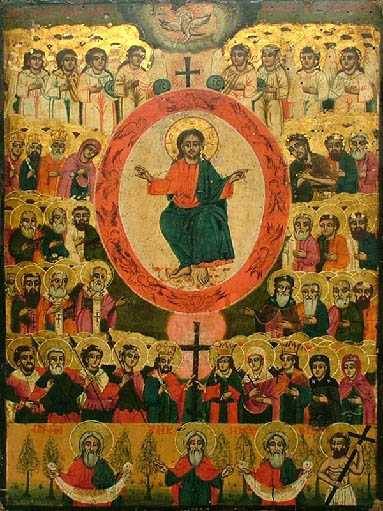Charles III and his wife Camilla were crowned in London, making him the fortieth monarch in British history. The coronation and anointing ceremony took place in Westminster Abbey. The previous coronation took place seventy years ago, on June 2, 1953, when Charles’ mother, Queen Elizabeth II, received the British crown at the same venue.
The main event of the ceremony – the anointing of the king with holy oil was performed by Justin Welby, Archbishop of Canterbury. He anointed Charles’s head, hands and chest with oil consecrated by Orthodox Jerusalem Patriarch Theophilus at the Holy Sepulcher (here), emphasizing the connection with the Old Testament royal anointing, and placed the crown on the monarch’s head. During the anointing, a Byzantine choir conducted by Alexander Lingas, a teacher of Byzantine music, performed Psalm 71, and after the coronation, Charles III was blessed by the Orthodox Archbishop of Thyatira and Great Britain Nikitas.
The ceremony contains a lot of Christian symbolism and messages about the nature of power. Here are some of them:
The procession at Westminster Abbey was met by the Archbishop of Canterbury and reached the entrance of the church, accompanied by the reading of Psalm 122 (121): “Let us go to the house of the Lord”, whose main message is peacemaking: the new monarch comes in peace and to establish peace .
The King swore an oath on the King James Bible and was then given a Bible to remind him of God’s law and the Gospel as the rule for the life and government of Christian monarchs. Kneeling before the altar, he said the following prayer, which emphasized the Christian view of government as a service to people, not violence over them: “God of compassion and mercy, Whose Son was not sent to be served, but to serve, give me grace to find in Your service perfect freedom, and in this freedom to know Your truth. Grant me to be a blessing to all Your children, of every faith and persuasion, so that together we may discover the ways of meekness and be led along the paths of peace; through Jesus Christ our Lord. Amen.”
A child greeted the king with the words: “Your majesty, as children of the kingdom of God we greet you in the name of the King of kings”, and he replied: “In his name and according to his example I came not to be served, but to serve” .
The main regalia that the monarch received was a golden sphere with a precious cross, which symbolizes Christendom and the British monarch’s role in protecting the Christian faith. The king also received two golden sceptres: the first has a dove on its tip, symbolizing the Holy Spirit – an expression of the belief that the monarch’s authority is blessed by God and must be exercised in accordance with His laws. The dove scepter is a symbol of spiritual authority and is also known as the “scepter of justice and mercy.” The other ruler’s scepter has a cross and symbolizes secular power, which is Christian. All three regalia, as well as the Crown of St. Edward, have been used at the coronation of every British monarch since 1661.
The king was also presented with the sword of state, upon receiving which he said a prayer for widows and orphans – again as a sign that peace is the highest value to which every Christian ruler should strive, and war leaves death in its midst.
With his coronation, Charles III became head of the Church of England. From the 16th century, when the Anglican Church severed relations with the Roman Catholic Church and was declared the state religion, the British monarchs began to head it, thus cutting off the Pope’s right to interfere in the life of the monarchy. Ecclesiastical leadership of the Church of England is exercised by the Archbishop of Canterbury. Charles III was also given the title “Guardian of the Faith”.
Illustrative photo: Orthodox icon of All Saints.












